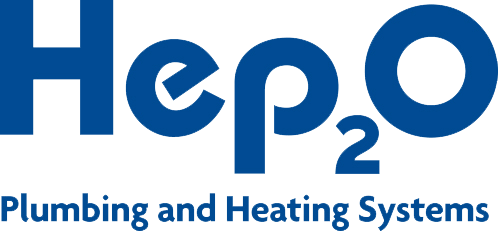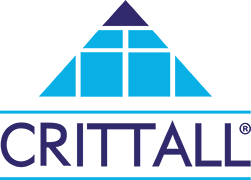Back
What is link building and why do you need it?

How using link building will generate more leads and traffic to your website
You might have heard of “link building” as an important part of your SEO strategy. But what does it involve, and why do we recommend it?
Link building is simply the process of proactively creating or requesting hyperlinks back from other websites to your own. The hyperlink, or link, gives the user the ability to navigate through different websites on the internet. Links directing people back to the website is more than just to generate traffic.
There are many techniques and ways to build links and these tend to vary in difficulty and the time it takes to implement them. Below discusses in short, the advantages of link building and different techniques you can implement to successfully introduce and maintain your link building campaign.
What is a link building campaign?
A link building campaign is a process in which the business is trying to increase links to their website. In order to acquire these links, it will rely on the assets belonging to the original website. These can include anything from information, content or products.
Historically, a link building strategy was little more than directory submissions, but that doesn’t cut it anymore. Successful link building now involves creating and sharing a variety of engaging content and collaborating with other websites and bloggers. Link building is now synonymous with “content outreach”.
How can building links to my website benefit my business?
Link building increases traffic through increasing rankings – one causes the other. It can also assist in increasing brand reputation from links with a trusted and recommended source. Link building, if undertaken correctly, is a tool which can dramatically increase sales and drive customers to your website.
Good use of link building will help establish your business to be the leading authority in that sector. The content which the website publishes will showcase the expertise in that market and will help build and improve brand reputation.
SEO benefits of backlinks
Backlinks are a strong signal for Google (and other search engines) that your website is “recommended” or “popular”, so websites with more and higher quality backlinks are more likely to rank higher in the search results.
Backlinks are still probably the most important ranking factor, the more backlinks you have pointing back to your site, the more popular it will be.
Domain authority
Domain Authority measures how authoritative a website is seen to be by search engines. It is a metric which seeks to establish how well a website will rank in search engine results pages (SERPs). Businesses focus on the ranking of their webpages as this determines how much traffic they get coming through their website.
Trust flow
When looking at trust flow, this is simply how trustworthy a page is based upon how many trustworthy sites tend to link to it. Building up a strong network of trusted links will increase the credibility of the website and its content. It will also, therefore, increase the amount of genuine and relevant traffic leading to your website.
Follow links vs No follow links
Firstly, looking at follow links, these are links that count as points, pushing SEO link juice and boosting the page rank of the linked-to sites, helping them go higher in the SERPs as a result.
A no-follow link is a link that does not count as a point in the page’s favour, does not boost page ranking, and doesn’t help a page’s placement in the SERPs. These links are not taken into consideration when determining ranking on search engines, however you can still click through via the link.
Anchor Text
This is the actual clickable text in the hyperlink, it is often blue and underlined to stand out from the main body of text and show that it is a link. To work best with SEO, the anchor text should be relevant to the linked page, conscience and not generic. This is a very simple way to include in-text links to other webpages or other relevant and more in-depth content.
Referral traffic
Using a good link, from a highly visited and trusted website will also assist in increasing referral traffic to the website. By focusing on gaining backlinks from relevant websites, you’ll increase web traffic from your target market – and attract people who are interested in your products and services.
Content outreach
One advantage of link building includes building relationships with similar businesses and people in the industry.
The main goal of outreach is to simply get the link; however, it is also important to build long term relationships which will, in turn, help promote the validity and trust of the website. If there is a wide audience of trusting followers on a specific blog page, they are more likely to trust the referral of that person over another link on a website or ranking on Google.
This alone is valuable as it creates genuine advocates for the business and dramatically increases the exposure of the website and the brand.

How to implement a content outreach campaign
1. Set campaign goals
As for any marketing project, it is important so set realistic and obtainable goals. Knowing the goal at the beginning will help ensure that the correct strategy can be implemented and that the goals of the link building campaign tie in closely with the overall business objectives.
2. Create a list of outreach targets for your content
Outreach looks at selecting who should be targeted for the link building campaign. Seeking to link with high-level, quality websites as they are trusted in the industry and will help gain publicity for your website, product or service. It is also possible to use them as proof later when reaching out to similar websites. Influencers will also be trusting of high-profile websites as this adds to the reputation and legitimacy of the information.
3. Choose link building tactics
Your tactics will depend upon the resources that are available and the industry that your business operates in. In more established and competitive markets it can be hard to find those link building opportunities. Newer and emerging markets are much easier to engage in and build a community in using bloggers and link building.
4. Create content that wows
The basic idea behind link building is creating an asset which can be used to get links to the website. This can include content such as infographics, guides, videos and images, for example. They are produced with the end goal of earning links, from people who find them relevant and of use on their website. The overall end goal would be that there is no need to ask for the links, rather the content will be produced and influencers will spread the word on the behalf of the business. This is a long-term goal and will require lots of investment and quality content consistently.
5. Get your content out there
Ensuring your content is reaching your intended audience is essential. Linking with relevant websites will dramatically broaden your audience and link with people who otherwise may not have visited your website. Getting your content out there is key, building on networking with those who are interested in your work and will be willing to help build on promoting your content.
5 bonus link building tactics that work
1. Guest Blogging
Guest blogging is a link building technique where the business approaches other websites to publish their content on their blog pages. This is an effective way to build links; however, to ensure this is works for you, you must choose your target websites wisely to make sure you’re appealing to the right audience.
2. Ego Bait
Ego bait is the process that a business approaches people who they seek to publish and share their content. Using the ego of that person or brand by using headlines such as “Top 10 influencers of 2017”. This will get the attention of those individuals or websites being featured and targeted towards a high-profile audience.
3. Broken Link Building
Broken link building is the process of targeting existing links on websites or blogs which no longer work. These are often on valuable, high-quality sites and this approach is to seek out and offer an alternative link for that person or website to use. Simply reaching out to those people and offering a quick fix which will gain you the link to that website or blog. This can be a very time-consuming tactic.
4. Online Profiles
Online profiles are websites which showcase the company’s work, for example, Houzz. This can be a great way to connect with an online community in an industry specific area. Sites like Houzz have over 40 million unique visitors who have access to feature photos, articles, product recommendations, and a user forum.
5. Directory Submissions
Directory submission is where you can list your site in various directories or databases under the correct category or sub category. These can be on local sites to target those in a specific area or simply to drive traffic to your website and increase enquiries for your product or service.
How to measure the success of the link building campaign
Link building can be difficult to measure through analytics software. There are, however, applications which can provide insights into links, including Ahrefs, SEMrush and GSC. The benefits of increased links can be seen in the long term with higher rankings, increased referral traffic and – by attracting the right audience – a higher conversion rate.
What is more difficult to measure – but just as important – is the word of mouth and the brand exposure of the business. Don’t underestimate the power of good quality content and what it says about your business!
To find out how we can help you accomplish this, feel free to call a member of our team on 01934808132 or send us a message online today.
This entry was posted in Digital Marketing, Marketing Strategy





